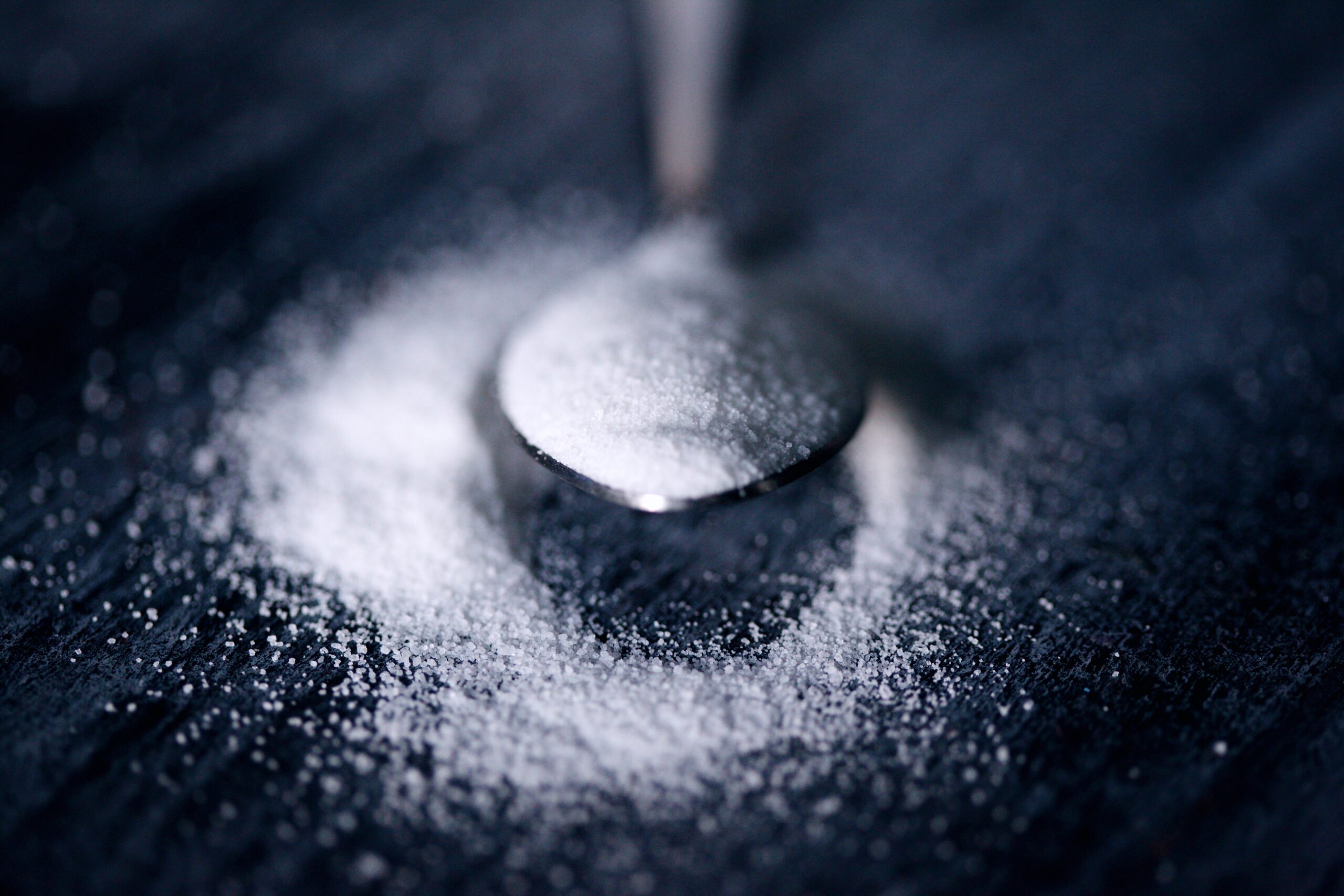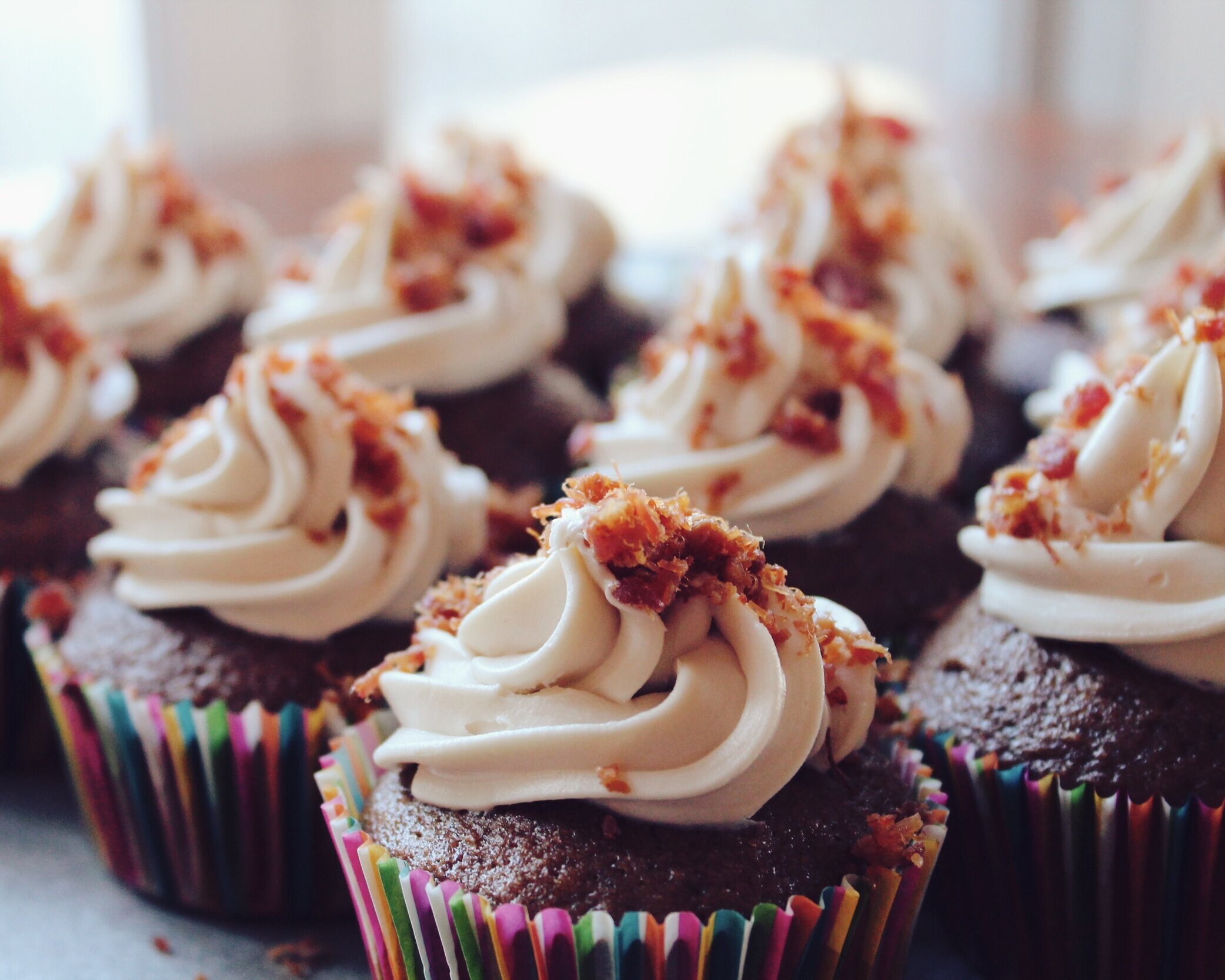Your Menopause Brain on Sugar

It’s certainly not news that eating too much sugar disrupts our health – but how does it affect menopause?
“Sugar” is a really broad term for carbohydrate molecules. Sugar can occur naturally in foods (like fruit and dairy) or result from processing (like table sugar or high fructose corn syrup). This latter category is called “added sugars” because these are added to other foods (like bread, sauces, drinks, you name it) as sweeteners.
Added sugars are typically the culprit behind health issues like weight gain, high triglycerides, low HDL cholesterol, high blood pressure, and high blood sugar. Added sugar can also put you at greater risk of developing heart disease and type 2 diabetes.
Below, we take a closer look at how excess sugar can specifically impact menopause symptoms and midlife brain health – and what you can do about it.
What’s the connection between sugar and menopause symptoms?
Eating too much sugar can make our blood sugar (a.k.a. blood glucose) levels high since sugar is easily digested and quickly enters the bloodstream. In turn, high blood sugars seem to play a role in worsening menopause discomforts.
In one study of nearly 1,000 postmenopausal women, having higher blood sugar levels was linked to more physical and psychological menopause symptoms. Another study, which followed 3,000 women in their 40s and 50s over an eight-year period, found that women with higher blood sugar levels had more frequent hot flashes, regardless of their weight or their estrogen levels. Similarly, postmenopausal women with metabolic syndrome – a constellation of symptoms that includes high blood sugar – have been found more likely to have hot flashes and sweating.
This research does not necessarily show that eating lots of sugar directly causes hot flash symptoms, but there is a clear pattern between having higher blood sugar and having more menopausal symptoms.

What’s the connection between sugar and brain health as we age?
The brain requires sugar from our digested food (glucose) as its main source of fuel. However, high sugar intake can become “too much of a good thing” when it impairs our memory and executive function. Women’s brains metabolize glucose 20 to 25% less efficiently during the transition from perimenopause and menopause.
In the short term, can excess sugar intake cause the dreaded brain fog of midlife? It’s unclear, though some evidence from animal studies suggests that sugar intake might impair your memory within 24 hours of consumption.
Long-term, high sugar intake spells trouble for brain health. Several well-designed studies have found that people who consistently have high blood sugar (even if they do not have diabetes) are more likely to become cognitively impaired.
One study found that people with higher sugar intake and lower fat/protein intake were more likely to develop mild cognitive impairment and dementia over about four years. Another study followed people for 10 years and found that those with higher Hemoglobin A1C levels (a measurement of blood sugar levels over several months) were significantly more likely to cognitively decline. There is also a strong link between high blood sugar and Alzheimer’s disease.
Fortunately, some research suggests that this effect may be reversible. Switching to an eating pattern that is lower in sugar and higher in antioxidants and healthy fats may help the brain regain function.
How much sugar is “too much”?
Exactly how much sugar is “too much” is unclear. The US Dietary Guidelines recommend that less than 10% of our daily calories come from added sugar. For a 2000-calorie diet, that’s a maximum of 50 grams of added sugar per day.
The American Heart Association has a stricter standard: it recommends that women limit added sugars to five percent or less of total daily calories. For a 2000-calorie diet, that’s a maximum of 25 grams of added sugar per day.
Nutrition labels are now required to show “Added Sugars.” Check out this image for where to find this information.

Image source: US Food and Drug Administration, 2020
Why do we crave sugar?
What Goes On in Your Brain
Sugar activates the “reward” systems in our brains, which is mostly linked to a neurotransmitter (brain signaling chemical) called dopamine. Dopamine leads to feelings of pleasure and satisfaction. It also motivates us to repeat the behaviors that help release dopamine so we can have those feelings again and again.
Plenty of different types of food are associated with pleasure in our brains, but sugar is uniquely potent at releasing feel-good chemicals. If you’re finding your sugar cravings extra high during midlife, this could be your body seeking pleasure as you deal with the physical and emotional frustrations of the menopausal transition. In other words – it makes sense if you feel this way!
What Goes On in Your Bloodstream
Our digestion and metabolism can also drive sugar cravings. To quickly review how nutrients are broken down in the body: carbohydrates (like added sugars) are quickly digested, then enter the bloodstream right away. Fats and proteins are broken down more slowly and, therefore, raise blood sugar more gradually.
Many of us are prone to eating meals and snacks high in carbohydrates yet low in protein or fat. For example, you may grab toast, fruit, or granola in the morning – all of which offer us carbs without any helpful protein or fat on board. The result? A quick spike in blood sugar, followed by a crash. This low blood sugar then results in cravings for more carbohydrates (like sugar) to perk us back up to baseline.
To combat this effect, it helps control blood sugar to “pair” them with protein and fat. The overall effect is a slower rise in blood sugar that helps us feel stable and prevents sugar cravings later on.

Taming Your Taste For Sugar
Consider Your Drinks
Drinking sugar-sweetened beverages like soda is the fastest way to rack up added sugar. Sweet drinks can be a fine once-in-a-while treat but regularly using them for hydration puts you at risk for really high sugar intake and the accompanying health issues.
Make it More Special
Focus on quality over quantity when it comes to enjoying sweets. Rather than having store-bought cookies or candy on hand that you munch on daily and mindlessly, make eating sweets a more special event. Try baking a new dessert from scratch and making a “moment” out of it. Then, freeze the extras so you’re in no rush to finish a batch before they go stale. Or, give the extras away!
Find Your “Dopamine” in Other Ways
If you’re feeling down, see if you can create a boost from dopamine-inducing activities that don’t involve sugar. Taking a walk, listening to your favorite songs, and spending quality time with friends can help.
Balance Your Blood Sugar
When you eat carbs or higher-sugar foods, pair them with fats and protein – this will help stabilize your blood sugar and prevent sweets cravings. A few quick examples:
- Fruit with cheese or peanut butter
- Toast with avocado, smoked salmon, or tuna
- Crackers with cheese, hummus, or olive tapenade
- Smoothies that contain milk (dairy, soy, or pea for protein), plain yogurt, or protein powder – not just fruit!
Looking for more expert tips on brain health? Download Midday from the App Store or visit us at Midday Health.
Grace Goodwin Dwyer, MS, MA, RD, LDN, is a Registered Dietitian who specializes in women’s health. She helps prenatal, postpartum, and perimenopausal women feel more confident about their health and their bodies through smart food strategies. Grace offers nutrition counseling virtually as well as in the Nashville area. You can also find her on Instagram: @dietitian4women.
Sign up for more unique women’s health content
By submitting this form, you agree to the Lisa Health Privacy Policy and Terms of Use


